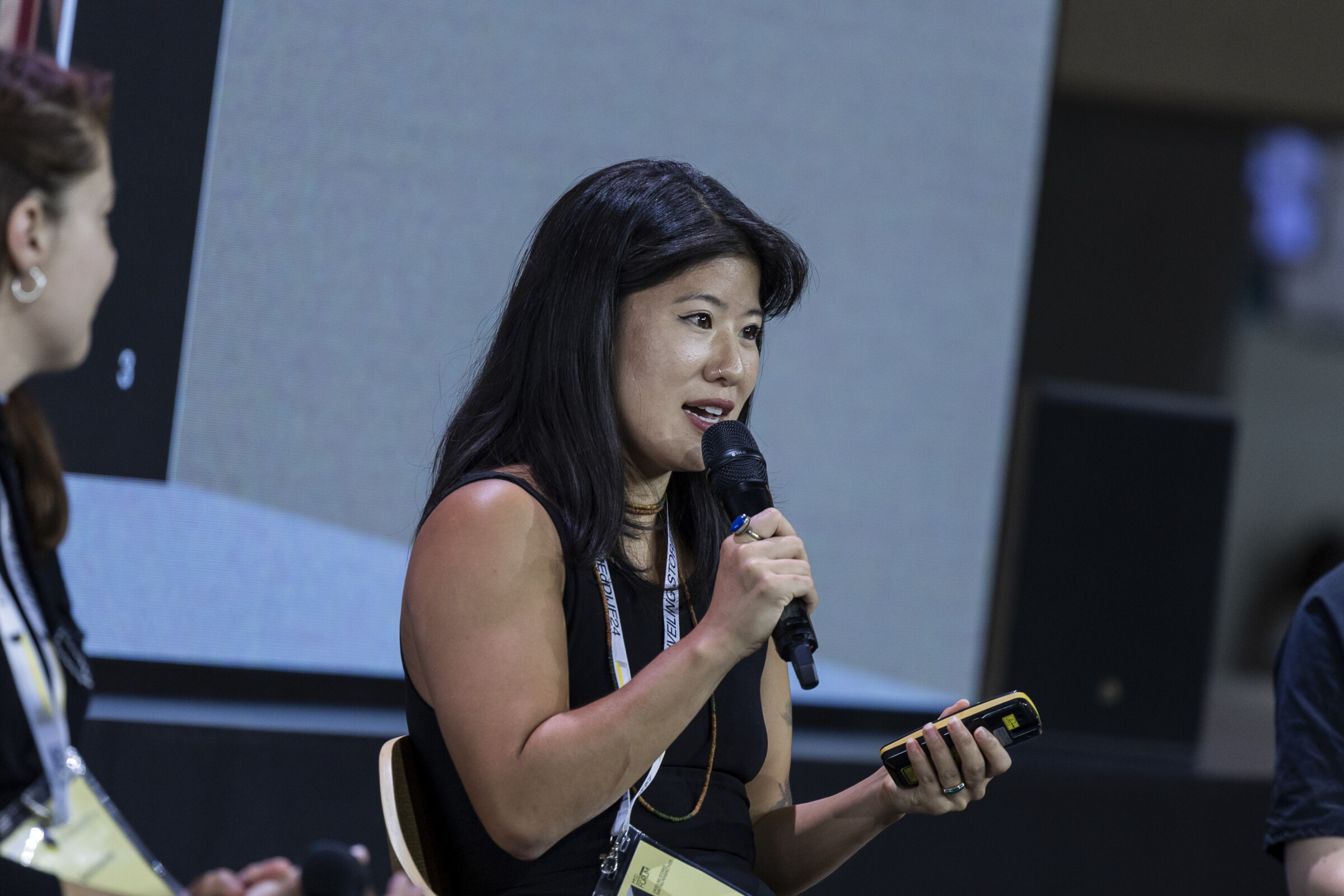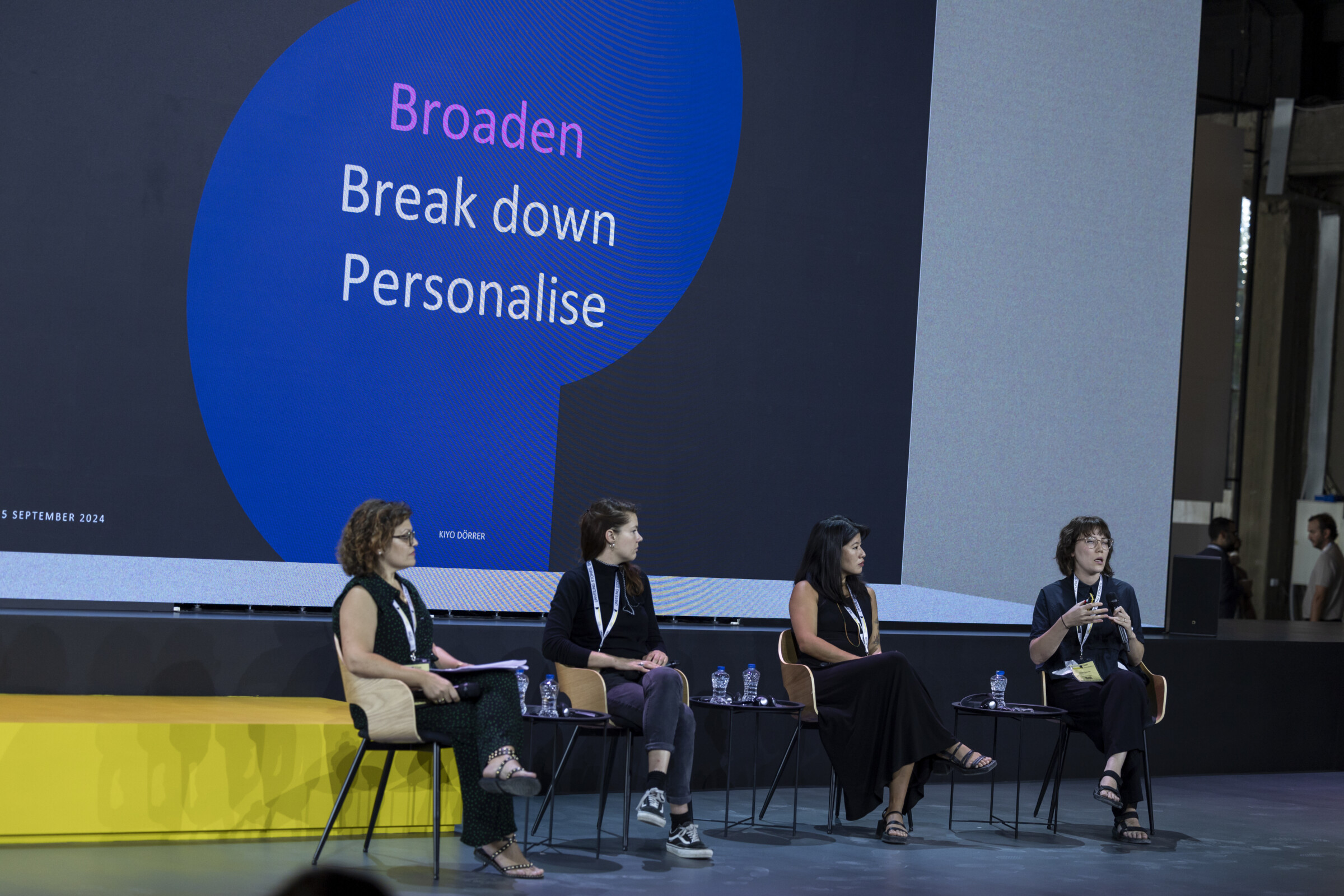As climate change intensifies, how can journalists make audiences care? At the 2024 iMEdD International Journalism Forum, experts discussed how climate journalism can overcome public apathy by bridging the gap between scientific data and audience engagement. Neil Mahto, a student at Johns Hopkins University reports for the Forum’s Pop-Up Newsroom.
“Through food, you can see where the power lies”: Lessons from investigating the food industry

How can journalists use creative formats more strategically to educate the public and combat food industry misinformation? Isaac Pollock, a University of Pennsylvania student, highlights key points on the importance of transparency, collaboration, and innovative storytelling in investigating journalism about the food industry from a panel of investigative journalists during the 2024 iMEdD International Journalism Forum for the Forum’s Pop-up Newsroom.
Climate change is perhaps humanity’s most looming threat and has yet to become the biggest story of news outlets in 2024. The issue has become so peddled by pundits that to many viewers the discussion is trite. On the second day of iMEdD’s International Journalism Forum 2024, journalists Ingrid Gercama, Joi Lee, and Kiyo Dörrer shared their thoughts at the panel, “Climate Journalism: Bridging the gap between science and audience” which was moderated by Vera Penêda, Director of Programs and Impact at the European Journalism Centre. The panelists discussed how and why news avoidance has led to general apathy about the destructive power of climate change. They also shared new ways, from novel journalistic delivery to a change of tone, to cut through news avoidance and get audiences to engage with their climate content.
Creative storytelling: how journalists are using games to boost climate engagement
Collaborations between journalists and climate nonprofits can especially increase the visibility of environmental issues. Journalist Ingrid Gercama, a freelance investigative journalist, based in the Netherlands, created a Dungeons and Dragons style game out of investigative climate journalism (sometimes referred to as “live journalism”) where fictional characters and envelopes of evidence allowed participants to simulate the experience of investigating corporate corruption on environmental issues. “A very boring technical data-driven investigation can be made fun of. We felt that through making it into a game rather than something else we were able to engage with policymakers in a different way,” said Gercama. This creative method of engaging journalistic thought is one of many effective ways of creating more accessible and consumable journalism. Broadly, journalists should consider how their stories can be put in multiple formats, from docuseries to playable games, to be more palatable to journalist and non-journalist populations alike.
The power of diverse narratives
“Climate change is one of the stories journalism has never successfully told,” said Joi Lee, head of editorial at Earthrise studio. Scientific jargon, she added, can make climate change a difficult story to absorb by general audiences. She also shared data from several studies showing that 98% of climate stories have a negative tone and over half of young people (55.7%) believe humanity is doomed. According to studies, she shared, this kind of messaging makes people less likely to engage with climate journalism. Interestingly, 80% of people want stronger climate action by the government, but there’s a “perception gap” where many assume fewer of their peers share this desire. Mobilizing people to act requires bringing as many people as possible into the climate conversation: creating a diversity of climate stories with a diversity of people is imperative. So how do we move beyond this? “Celebrate the wins [for climate change] where they are,” suggested Lee.
Spotlighting community power attracts those communities to the issue of climate change more than overly advocating technocratic solutions. Earthrise has published articles about diverse topics from the Scottish Rainforest to indigenous storytellers in Brazil. Leveraging different types of expertise is an invaluable technique. Joi Lee finished her presentation by saying, “The interesting thing about climate is that it is deeply intersectional. You can talk about climate through an energy perspective, through a personal health perspective, through a public health perspective. (…) There are so many different points of entry.”

Climate change is one of the stories journalism has never successfully told
Joi Lee, head of editorial at Earthrise studio
Strategies for effective climate journalism
To capture the attention of audiences beyond climate-savvy people, journalists need to think bigger. Kiyo Dörrer, climate editor at Deutsche Welle, suggested that by expanding the scope of their stories and crafting headlines that go beyond just climate, they can spark curiosity and pull in a wider crowd. It’s about making climate part of a bigger, more relatable narrative.
“We do get people that are interested in the climate. We do get people who are very very engaged. But that’s not necessarily the only people we want to reach,” said Dörrer. For example, she added, a story advocating against banning cannabis could delve into how hemp is environmentally friendly. Without participating in clickbait, climate ideas can be weaved into other relevant stories without steering off-topic.

She then shared three tips for making climate stories more engaging, using examples from Deutsche Welle to illustrate her points.
- Intentional framing and headlines: Journalists should consider how to present climate topics in a more focused way, connecting them to people’s real-life experiences.
- Break down stories: Simplifying complex topics is key to making a lasting impact once readers engage. Infographics can play a powerful role in helping audiences retain information.
- Personalizing the narrative: Making climate stories relatable and personal through the eyes and experiences of the reporters can create a lasting impression on their audience.
Finally, Dörrer said that they never report on a climate story without offering a solution. “So the longer the story has been talked about, the more percentage of the story needs to be solutions, or else you hear the same thing over and over and over again and it disengages people. So, if you talk about plastic, for example, it needs to be more about the solutions than the problem. Everybody knows about the problem”. She explained that with climate crisis coverage at first, there was a strong sense of urgency, with most coverage (98%) being negative. Then, the focus shifted to solutions, emphasizing that every solution matters. “We need to show how viable the solutions are to the people and give context,” she said.
You can watch again the discussion here.
Check out all Pop-Up Newsroom 2024 stories here.